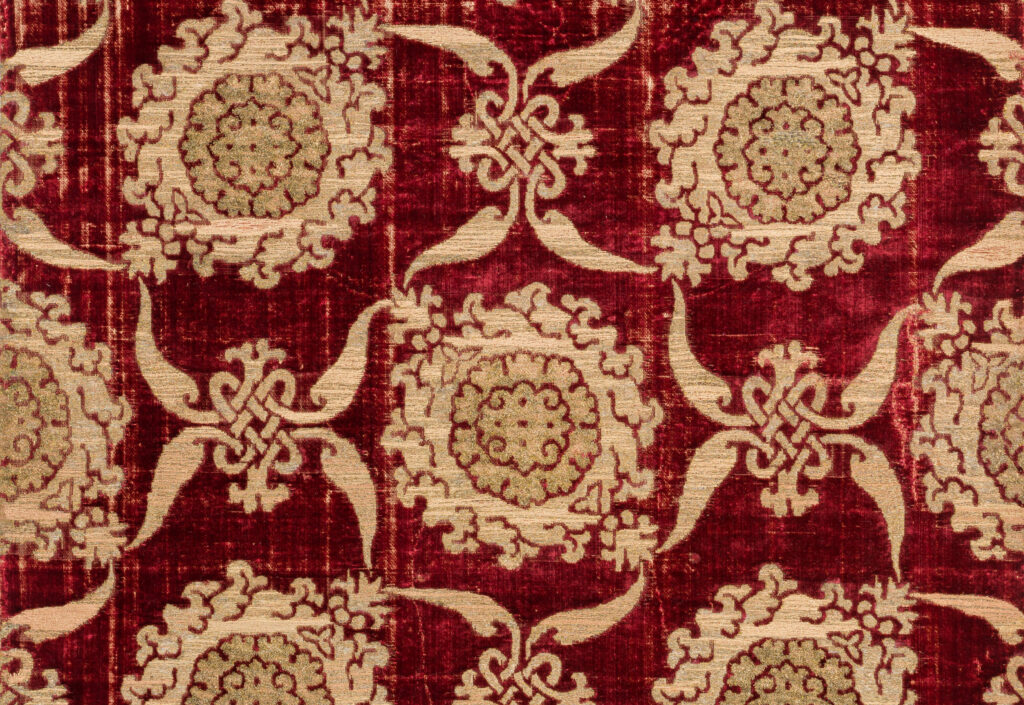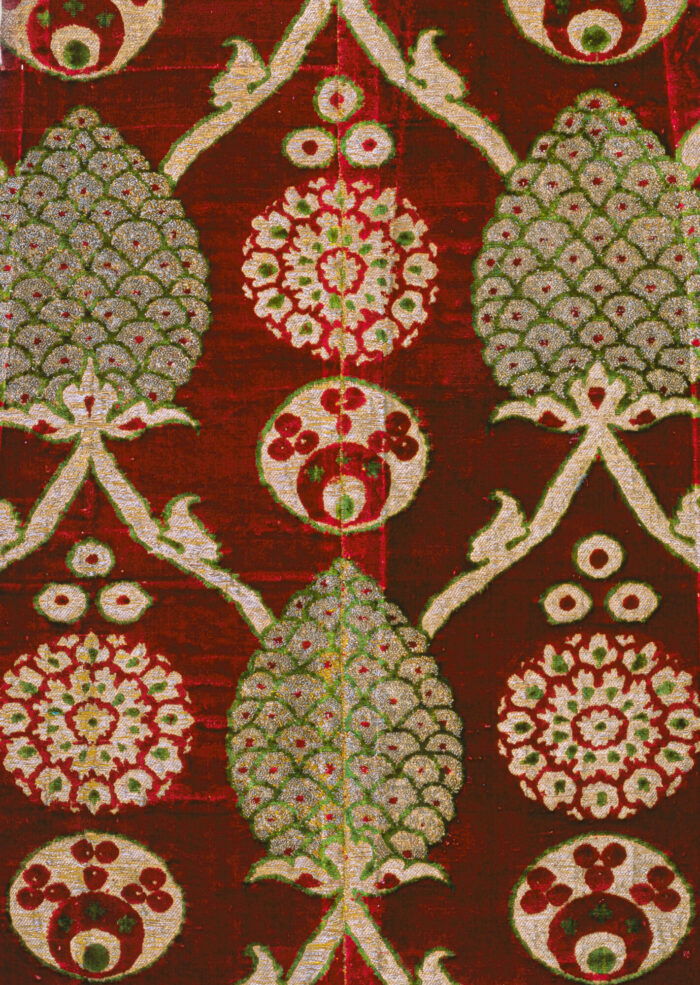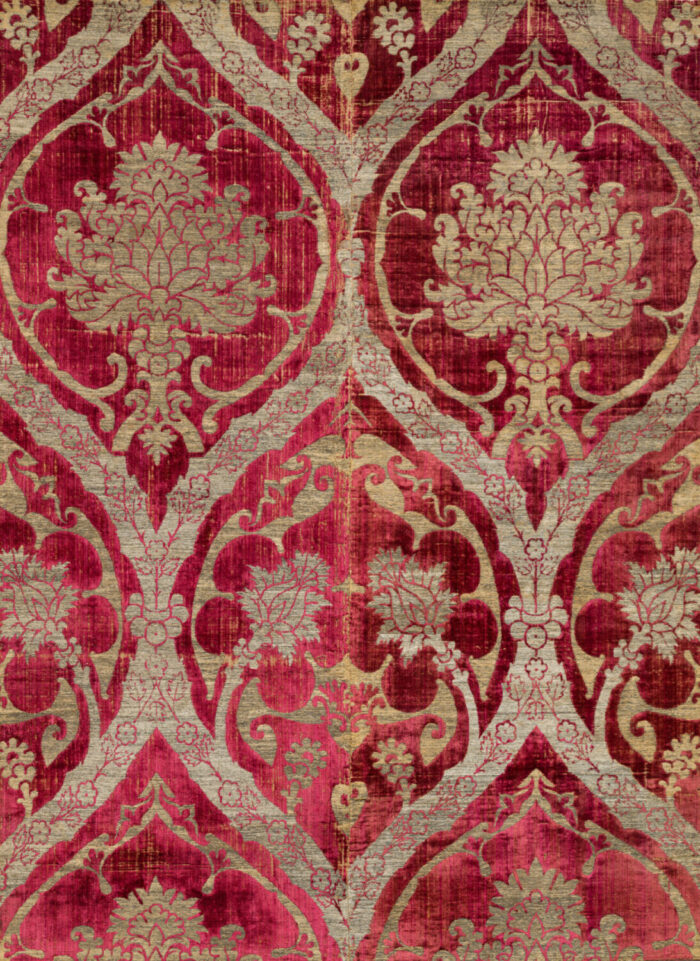Mini-Exhibition Velvets in Focus Exhibition closed
When Werner Abegg first began collecting textiles around 1930 velvets of the fifteenth and sixteenth century were among his earliest and most important acquisitions. Of all the different types of silk weaving, these were the ones that fascinated the young collector most. The Abegg-Stiftung has been able to amass a number of important Italian and Ottoman velvets in recent years. These tell of the many forms of artistic exchange that took place between West and East. The new acquisitions add both breadth and depth to an existing focus of the collection. A small selection of them is now to go on show for a few weeks.


